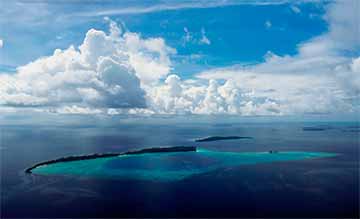Putting together a picture of possible future development and investments to aid employment and the economy
A bit like putting pieces of a jigsaw together I have been trying to figure out in my mind how China being a new diplomatic partner on the block will help, if at all, to create developments on a scale in the Solomon Islands to benefit local people’s needs for jobs and accord with the government’s Trade Development Framework.
What do I see? Well, the Solomon Islands now has modern ports. It has two international airports, with an upgrade of the Honiara International Airport to begin soon.
The Solomon Islands Ports Authority in Honiara operates the Port of Honiara and Port of Noro. Established on June 4, 1956, it has the primary responsibility of operating and maintaining all the facilities at the ports .
The Noro International Airport has direct connections to Brisbane in Australia.
The Solomons has an abundant ‘in-waiting’ work force eager to learn new skills and become productive agents for themselves and the country.
So far so good, but one piece of the jigsaw that has some difficulty in joining up is the question of land tenure and ownership. Issues best described by Phillip Tagini in his now somewhat dated paper ‘The Effect of Land policy on Foreign Direct Investments in the Solomon Islands.’
In that paper Mr. Tagini set out what he saw as major obstacles in the way of obtaining land in the Solomon Islands for development and investment purposes. He described these as:
Obstacles in the way of land tenure.
Difficulty of ascertaining land holding entity.
Security of land title, and issues of land policy and reform.
One will need to download the paper and see exactly how the ‘obstacles’ play out, and presumably issues that are still relevant to this day.
In 2015, the vision of the SIG Trade Policy Framework was quoted as being:
“To build the productive capacity of the Solomon Islands economy via sustainable trade and investment. The resulting creation of wealth and employment opportunities is aimed at promoting human development, reducing poverty and improving the living standards for Solomon Islanders”
It was about that time (2015) that the then DCC government considered the possibility of establishing Free Economic Zones in the Solomon Islands to encourage foreign investors to create businesses aided by incentives to set up shop, transfer R&D technology and, in so doing, provide local job opportunities and aid the economy.
I immediately lent my support to the government’s proposals indicating I had witnessed such schemes in operation in Thailand and gave one example of a large manufacturing plant initiated by Taiwanese investors and where 10,000 Thai men and women had successfully gained long-term employment and benefits.
For whatever reason, the Free Economic Zones did not eventuate and one can only speculate that land issues, lack of interest by investors and tax incentives then on offer might have been some of the reasons the policy was seemingly shelved.
While I am sure the SIG’s Trade Police Framework remains, could China play a part in seeing the idea of Free Economic Zones resurrected?
Recently, landowners and tribes owing and residing on customary land have shown compromise in support of national development interests and I have in mind what events recently took place in Bina Harbour, Tina River and in places where the Coral Sea internet-cable was brought ashore.
Could such kinds of compromises bring about the development of land in the interest of people needing work and in aid of the national economy?
If so, I ask myself, what about China’s interest in investing in industrial type initiatives, given what I have said about Solomon Islands port facilities, airports and available work force, albeit largely unskilled in terms of manufacturing and engineering trades?
In China, for the last four decades, urbanisation has been centred on export demand, cheap labour and low pricing.
Almost 10 million rural migrants moved to Shanghai, part of the world’s most rapid urbanization and almost 500 million rural Chinese people migrated into cities over the last 35 years, finding work in huge industrial size factories and plants.
The Solomon Islands might well be better placed than in past years with modern infrastructure such as ports and air links and has potentially a large work force, but will China invest, based on its own requirements for export demand, cheap labour and low priced goods?
Time will tell.
Yours sincerely
Frank Short


